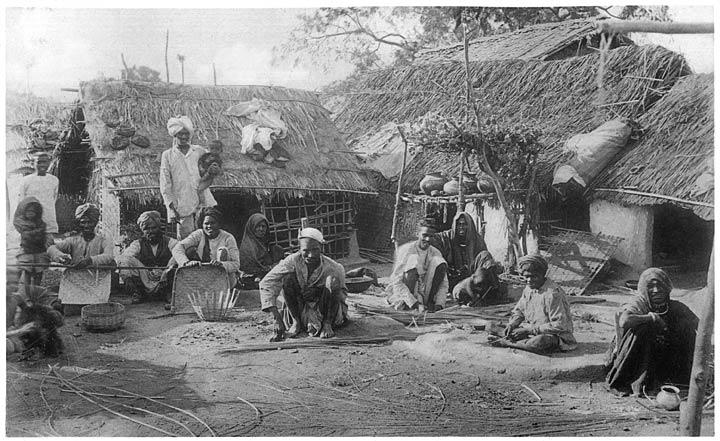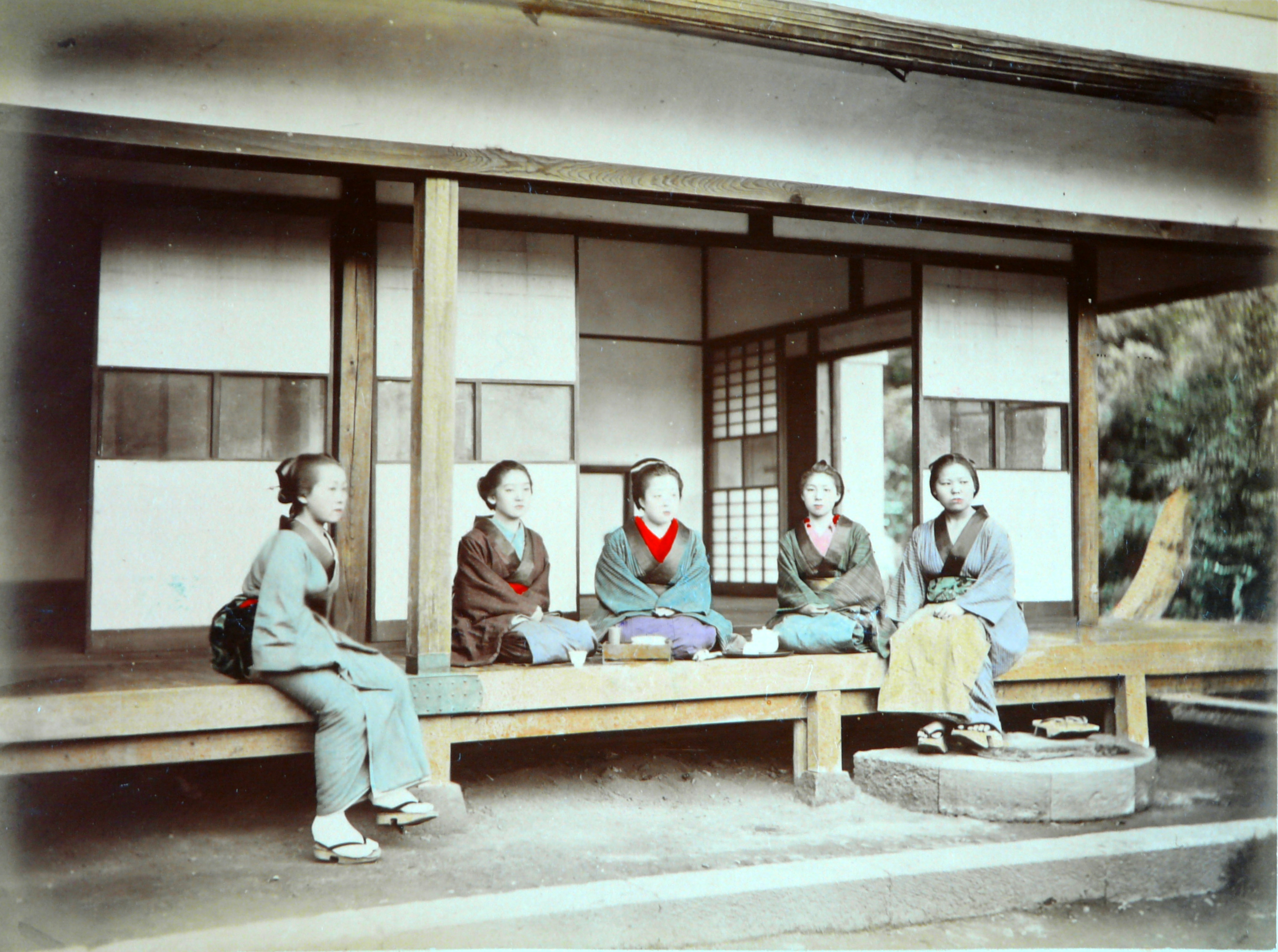|
Pila (architecture)
In Sri Lankan architecture, a pila is a type of veranda that is most notably found in Sinhalese people, Sinhalese farm houses. The floor or platform is projected beyond the walls creating a continuous ledge on the building exterior. Buildings that featured a courtyard could have an inner pila. Construction The pila is built from stone and earth brick, smoothly plastered and finished with cow dung, creating a hygienic, hard and impervious surface. Higher status houses had more rooms connecting to the internal pila. During the 19th and early 20th centuries, visitors would be received and entertained on the pila. For people of lower status ''kolombu ketes'', low wooden seats, would occasionally be brought out. In later times, due to Hindu influence, visitors of the same status as the owners (dictated by caste) were invited into the courtyard but were rarely invited to sleep there. However, in cases of emergency those visitors might stay in a front room. See also * Engawa Reference ... [...More Info...] [...Related Items...] OR: [Wikipedia] [Google] [Baidu] |
Sri Lanka
Sri Lanka, officially the Democratic Socialist Republic of Sri Lanka, also known historically as Ceylon, is an island country in South Asia. It lies in the Indian Ocean, southwest of the Bay of Bengal, separated from the Indian subcontinent, Indian peninsula by the Gulf of Mannar and the Palk Strait. It shares a maritime border with the Maldives in the southwest and India in the northwest. Sri Jayawardenepura Kotte is the legislative capital of Sri Lanka, while the largest city, Colombo, is the administrative and judicial capital which is the nation's political, financial and cultural centre. Kandy is the second-largest urban area and also the capital of the last native kingdom of Sri Lanka. The most spoken language Sinhala language, Sinhala, is spoken by the majority of the population (approximately 17 million). Tamil language, Tamil is also spoken by approximately five million people, making it the second most-spoken language in Sri Lanka. Sri Lanka has a population of appr ... [...More Info...] [...Related Items...] OR: [Wikipedia] [Google] [Baidu] |
Veranda
A veranda (also spelled verandah in Australian and New Zealand English) is a roofed, open-air hallway or porch, attached to the outside of a building. A veranda is often partly enclosed by a railing and frequently extends across the front and sides of the structure. Although the form ''verandah'' is correct and very common, some authorities prefer the version without an "h" (the ''Concise Oxford English Dictionary'' gives the "h" version as a variant and '' The Guardian Style Guide'' says "veranda not verandah"). Australia's ''Macquarie Dictionary'' prefers ''verandah''. Etymology ''Veranda'', as used in the United Kingdom and France, was brought by the British from India (, ). While the exact origin of the word is unknown, scholars suggest that the word may have originated in India or may have been adopted from the Portuguese and spread further to the British and French colonists. Ancient and medieval Indian texts on domestic architecture like Vastu shastra uses the word ... [...More Info...] [...Related Items...] OR: [Wikipedia] [Google] [Baidu] |
Sinhalese People
The Sinhalese people (), also known as the Sinhalese or Sinhala people, are an Indo-Aryan peoples, Indo-Aryan ethno-linguistic group native to the island of Sri Lanka. They are the largest ethnic group in Sri Lanka, constituting about 75% of the Sri Lankan population and number more than 15.2 million. The Sinhalese people speak Sinhala language, Sinhala, an insular Indo-Aryan languages, Indo-Aryan language. Sinhalese people are predominantly Theravada Buddhists, although a significant minority of Sinhalese follow branches of Christianity in Sri Lanka, Christianity and Religion in Sri Lanka, other religions. Since 1815, Sinhalese people were broadly divided into two subgroups: the up-country Sinhalese of the Central province, Sri Lanka, central mountainous regions, and the low-country Sinhalese of the coastal regions. Although both groups speak the same language, they are distinguished as they observe different cultural customs. According to the ''Mahavamsa'', a Pali chronicle ... [...More Info...] [...Related Items...] OR: [Wikipedia] [Google] [Baidu] |
Cow Dung
Cow dung, also known as cow pats, cow poop or cow manure, is the waste product (faeces) of bovine animal species. These species include domestic cattle ("cows"), bison ("buffalo"), yak, and water buffalo. Cow dung is the undigested residue of plant matter which has passed through the animal's gut. The resultant faecal matter is rich in minerals. Color ranges from greenish to blackish, often darkening soon after exposure to air. Religious views In Hinduism, cow dung is believed to have antiseptic properties and is used to clean homes as well as being used in rituals. Cow dung is used in Hindu yajna ritual as an important ingredient. Cow dung is also used in the making of ''pancha-gavya'', for use in Hindu rituals. Several Hindu texts - including ''Yājñavalkya Smṛti'' and ''Manusmṛti'' - state that the pancha-gavya purifies many sins. The ''Mahabharata'' narrates a story about how Lakshmi, the goddess of prosperity, came to reside in cow dung. In the legend, Lakshmi ask ... [...More Info...] [...Related Items...] OR: [Wikipedia] [Google] [Baidu] |
Hindu
Hindus (; ; also known as Sanātanīs) are people who religiously adhere to Hinduism, also known by its endonym Sanātana Dharma. Jeffery D. Long (2007), A Vision for Hinduism, IB Tauris, , pp. 35–37 Historically, the term has also been used as a geographical, cultural, and later religious identifier for people living in the Indian subcontinent. It is assumed that the term ''"Hindu"'' traces back to Avestan scripture Vendidad which refers to land of seven rivers as Hapta Hendu which itself is a cognate to Sanskrit term ''Sapta Sindhuḥ''. (The term ''Sapta Sindhuḥ'' is mentioned in Rig Veda and refers to a North western Indian region of seven rivers and to India as a whole.) The Greek cognates of the same terms are "''Indus''" (for the river) and "''India''" (for the land of the river). Likewise the Hebrew cognate ''hōd-dū'' refers to India mentioned in Hebrew BibleEsther 1:1. The term "''Hindu''" also implied a geographic, ethnic or cultural identifier for ... [...More Info...] [...Related Items...] OR: [Wikipedia] [Google] [Baidu] |
Caste
A caste is a Essentialism, fixed social group into which an individual is born within a particular system of social stratification: a caste system. Within such a system, individuals are expected to marry exclusively within the same caste (endogamy), follow lifestyles often linked to a particular occupation, hold a ritual status observed within a hierarchy, and interact with others based on cultural notions of social exclusion, exclusion, with certain castes considered as either more pure or more polluted than others. The term "caste" is also applied to morphological groupings in eusocial insects such as ants, bees, and termites#caste, termites. The paradigmatic ethnographic example of caste is the division of India's Hinduism, Hindu society into rigid social groups. Its roots lie in South Asia's ancient history and it still exists; however, the economic significance of the caste system in India seems to be declining as a result of urbanisation and affirmative action programs. ... [...More Info...] [...Related Items...] OR: [Wikipedia] [Google] [Baidu] |
Engawa
An or is an edging strip of non-tatami-matted flooring in Japanese architecture, usually wood or bamboo. The may run around the rooms, on the outside of the building, in which case they resemble a porch or sunroom. Usually, the is outside the translucent paper , but inside the storm Hurricane shutter, shutters (when they are not packed away). However, some run outside the . that cannot be enclosed by , or sufficiently sheltered by eaves, must be finished to withstand the Japanese climate. Modern architecture often encloses an with sheet glass. An allows the building to remain open in the rain or sun, without getting too wet or hot, and allows flexible ventilation and sightlines. The area under an is sloped away from the building, and often paved, to carry water away. The area directly outside the paving is usually a French drain, collector drain that takes water still further away. The is thus a way to bridge the obstacles good drainage puts between the indoors and th ... [...More Info...] [...Related Items...] OR: [Wikipedia] [Google] [Baidu] |





